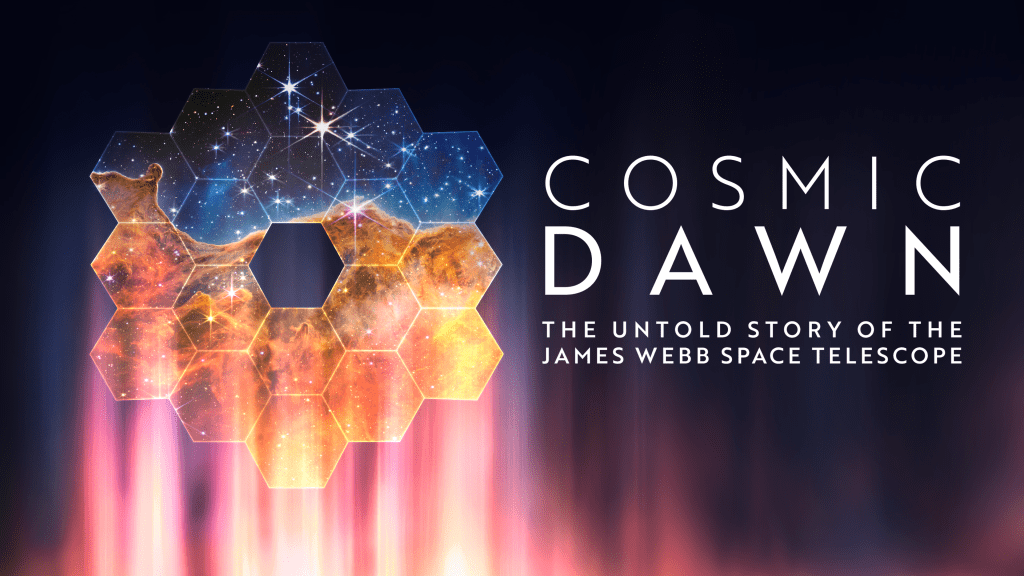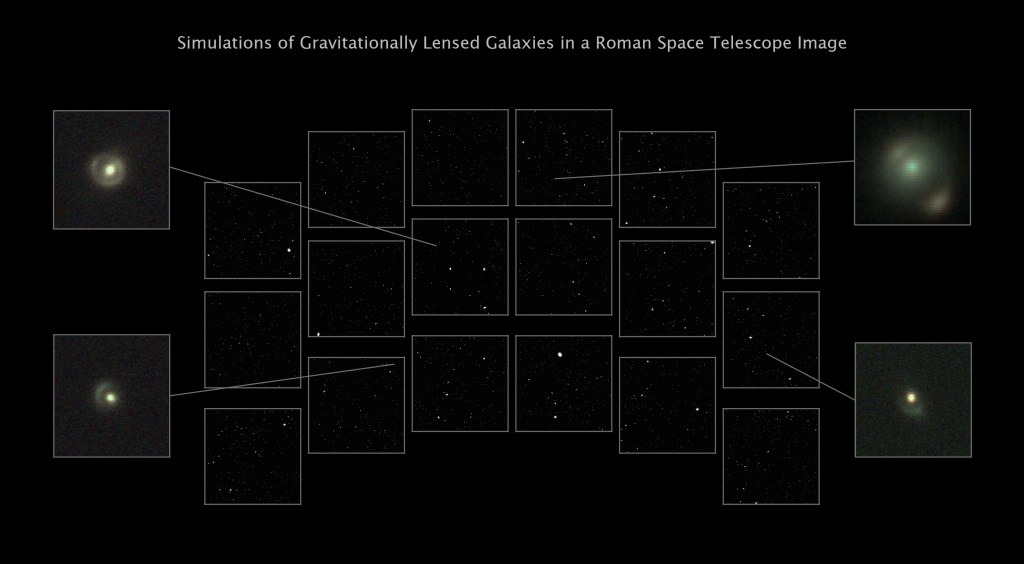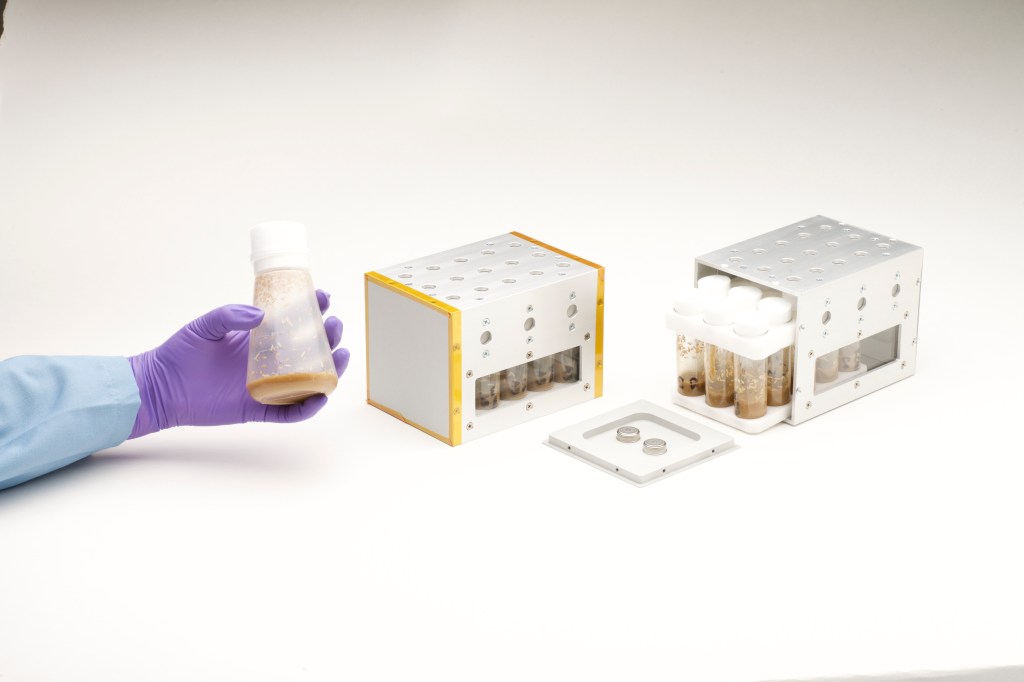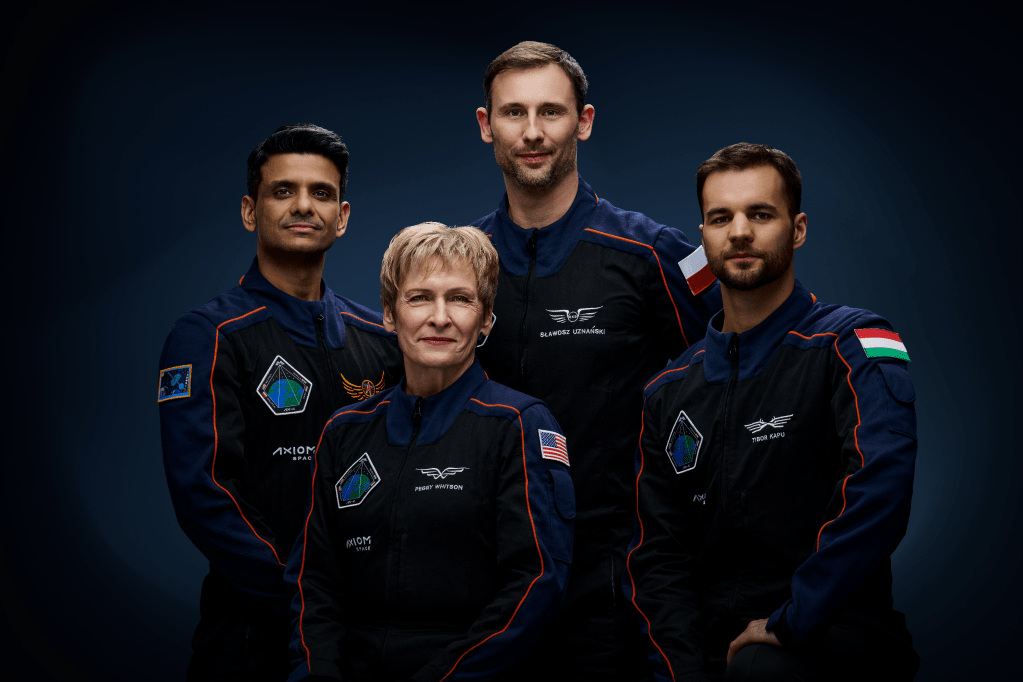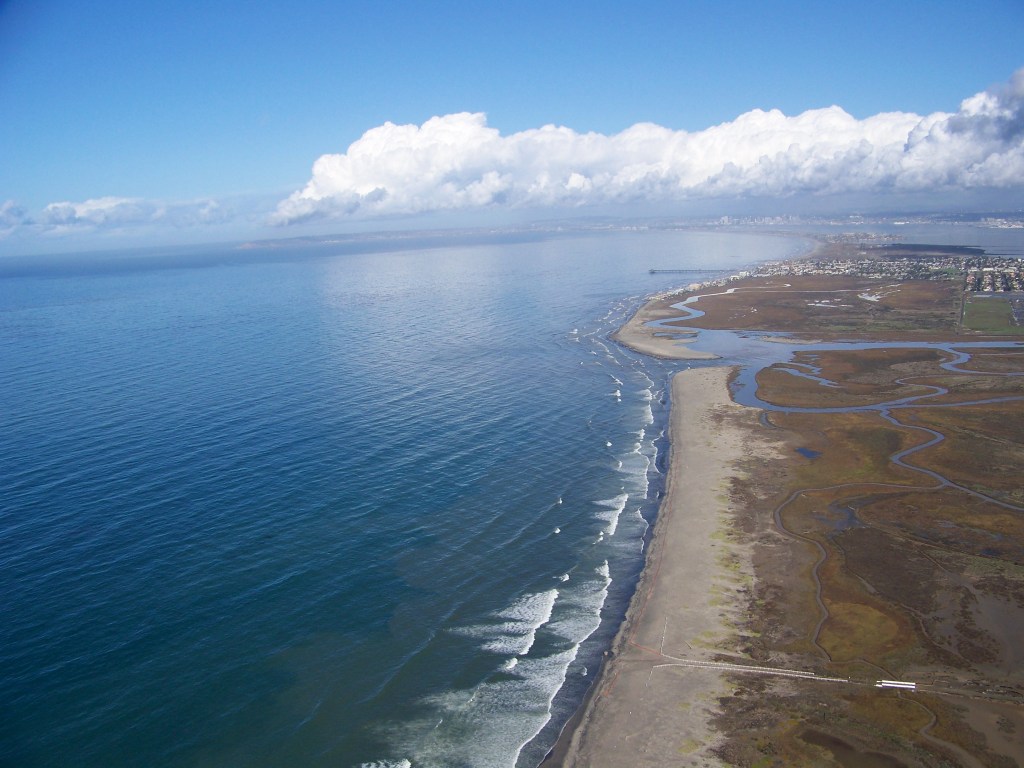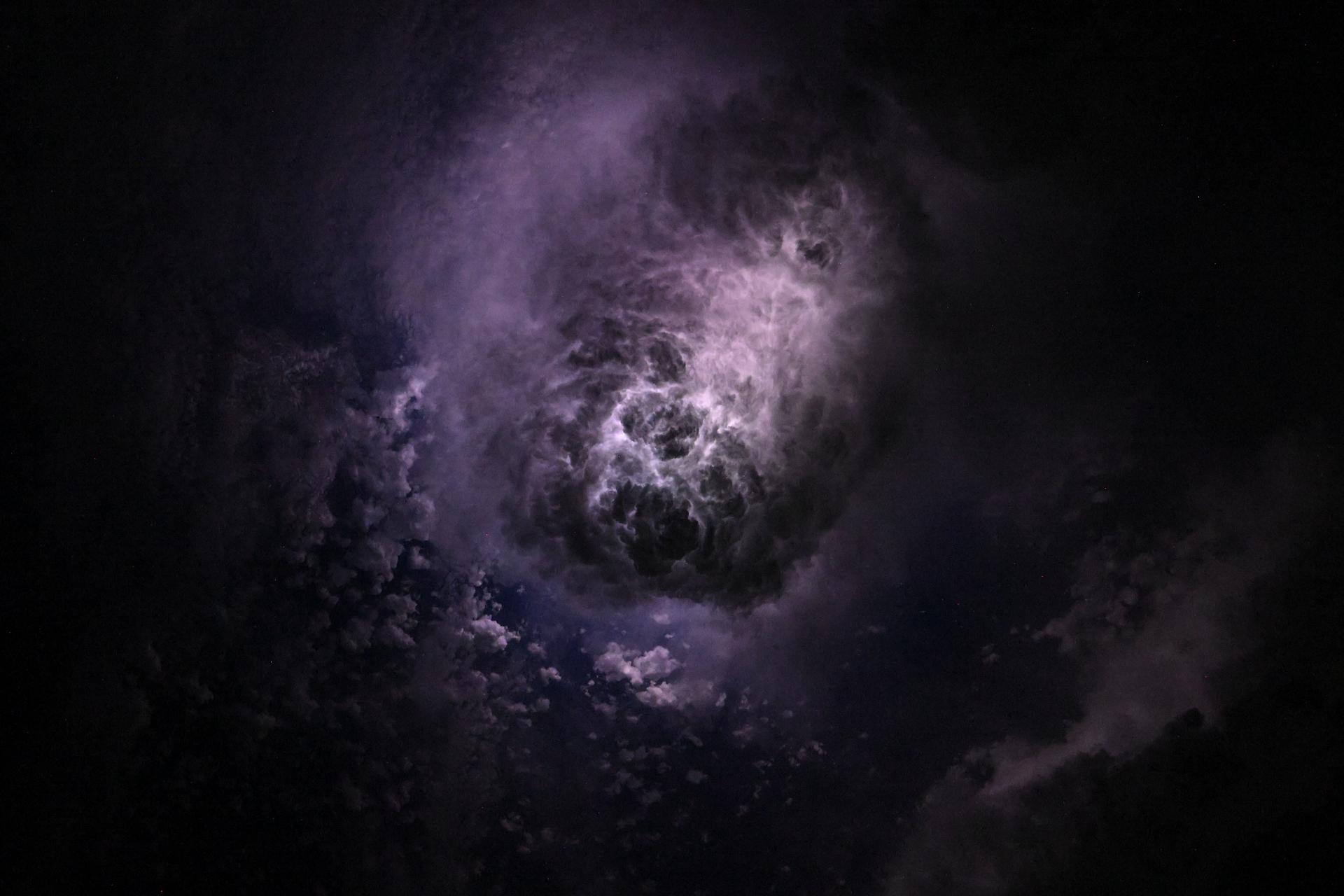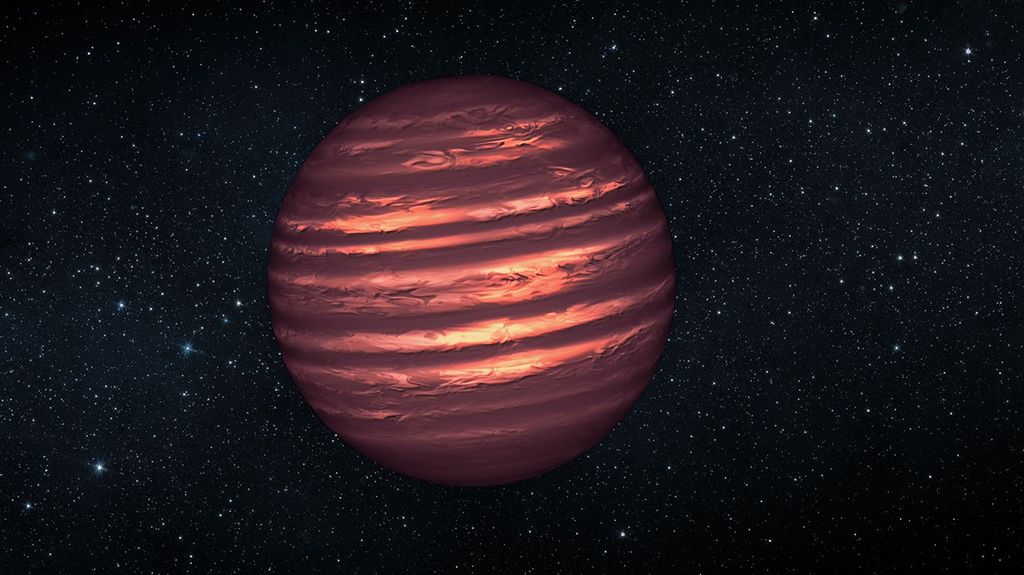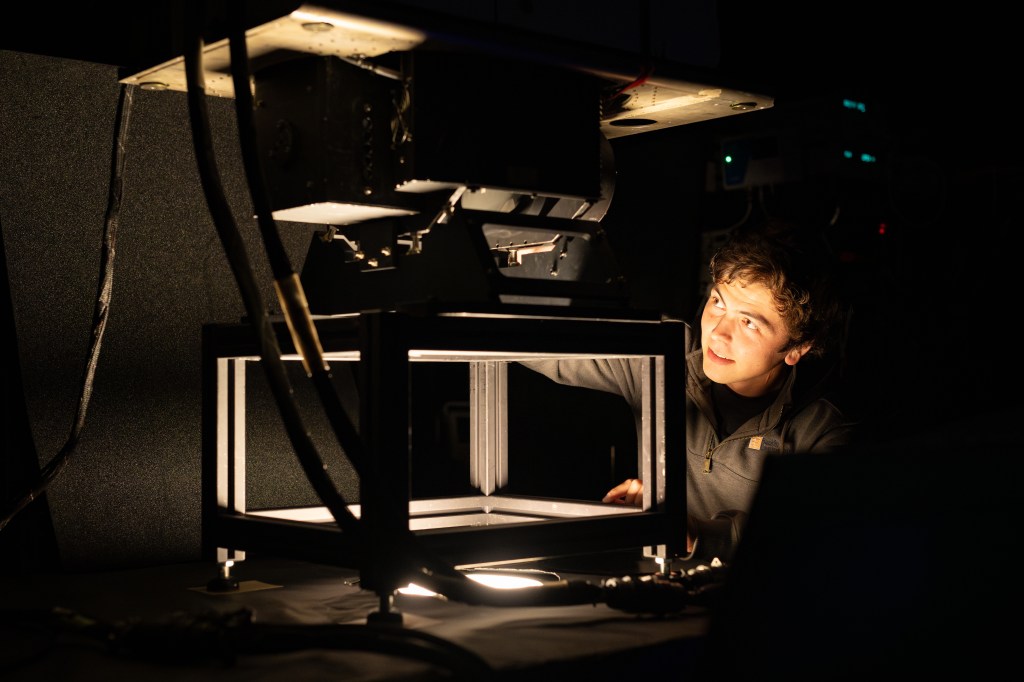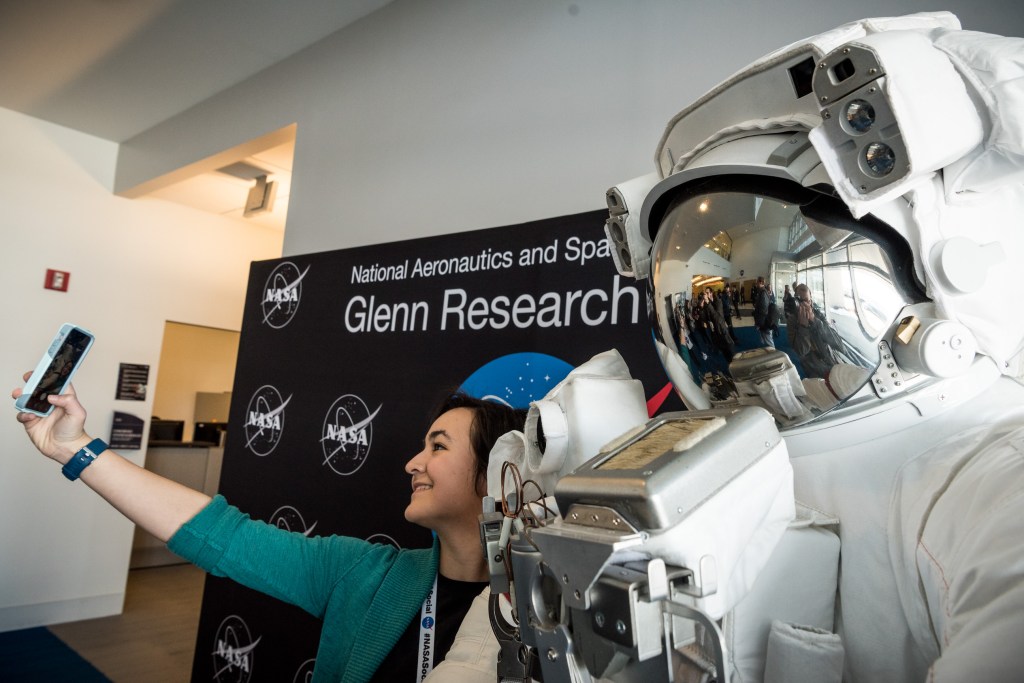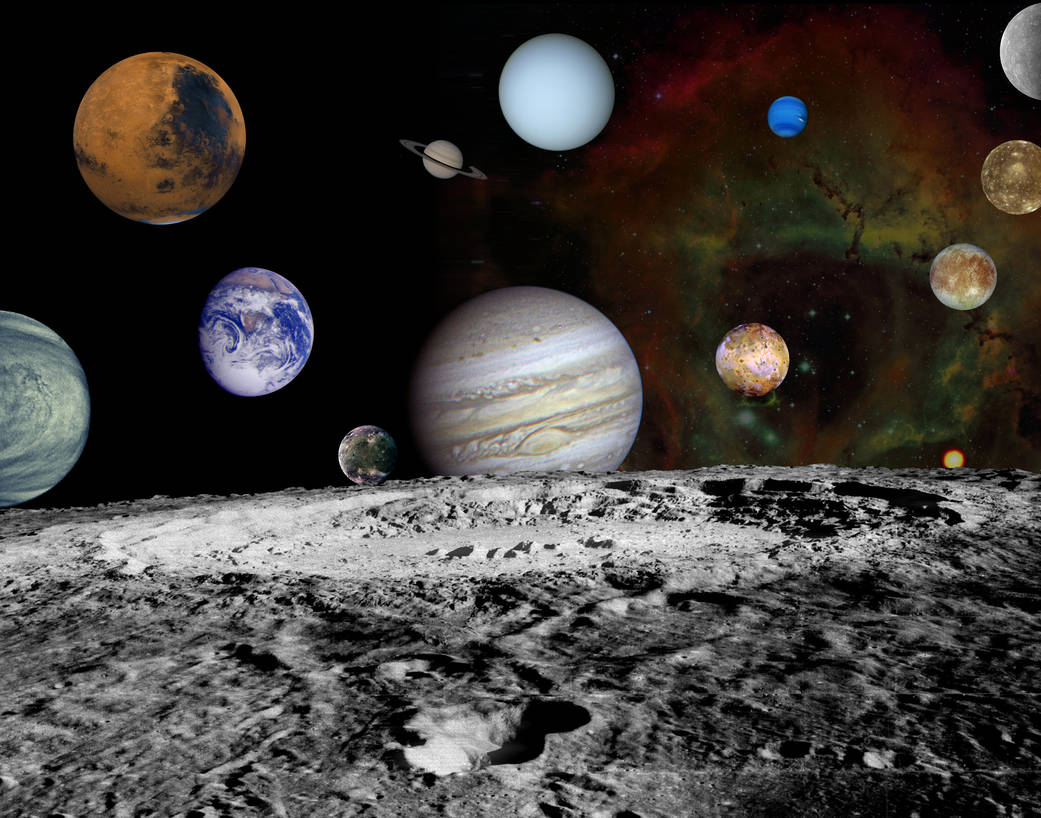This montage of images taken by the Voyager spacecraft of the planets and four of Jupiter’s moons is set against a false-color Rosette Nebula with Earth’s moon in the foreground.
Studying and mapping Jupiter, Saturn, Uranus, Neptune and many of their moons, Voyager provided better images and data than had ever been obtained by Earth-bound scientists. Data collection continues by both Voyager 1 and 2 as the renamed Voyager Interstellar Mission searches for the edge of the solar wind influence (the heliopause) and exits the solar system. A shortened list of the missions discoveries of Voyager 1 and 2 include: Uranian and Neptunian magnetospheres (magnetic environments caused by various types of planet cores); 22 new satellites including three at Jupiter, three at Saturn, 10 at Uranus, and six at Neptune; active volcanism on Io; active geyser-like structures and an atmosphere on Triton; Auroral Zones (where gases become excited after being hit by solar particles) on Jupiter, Saturn and Neptune; rings at Jupiter; and, large-scale storms on Neptune, originally thought to be too cold to support such atmospheric disturbances.Image credit: NASA
1 min read

